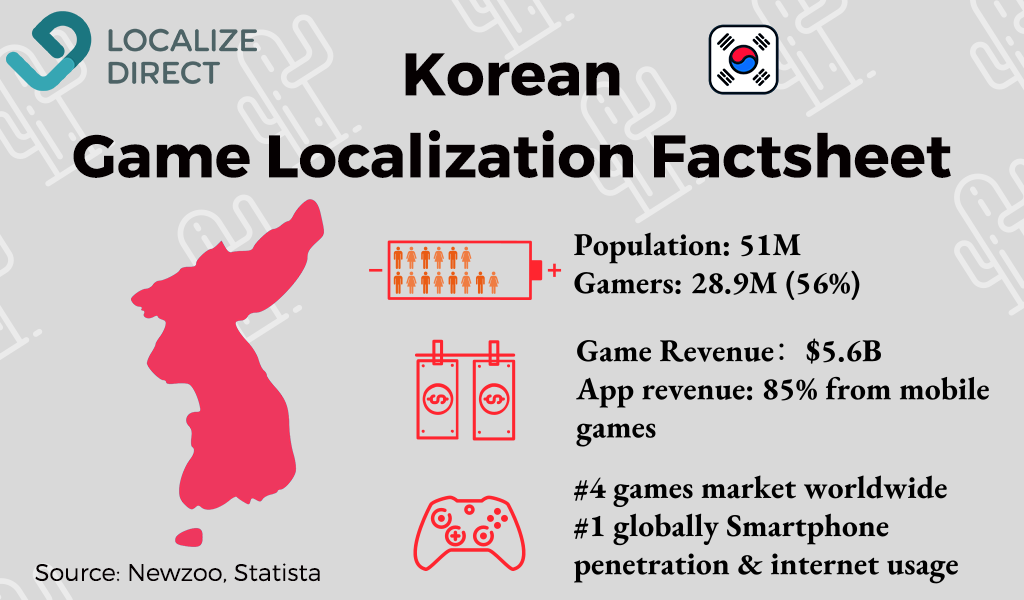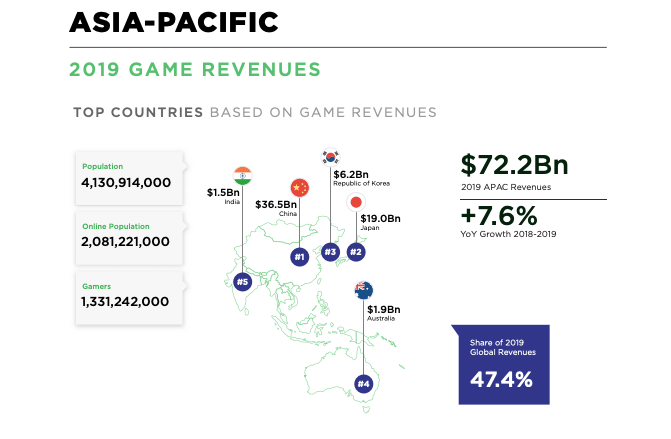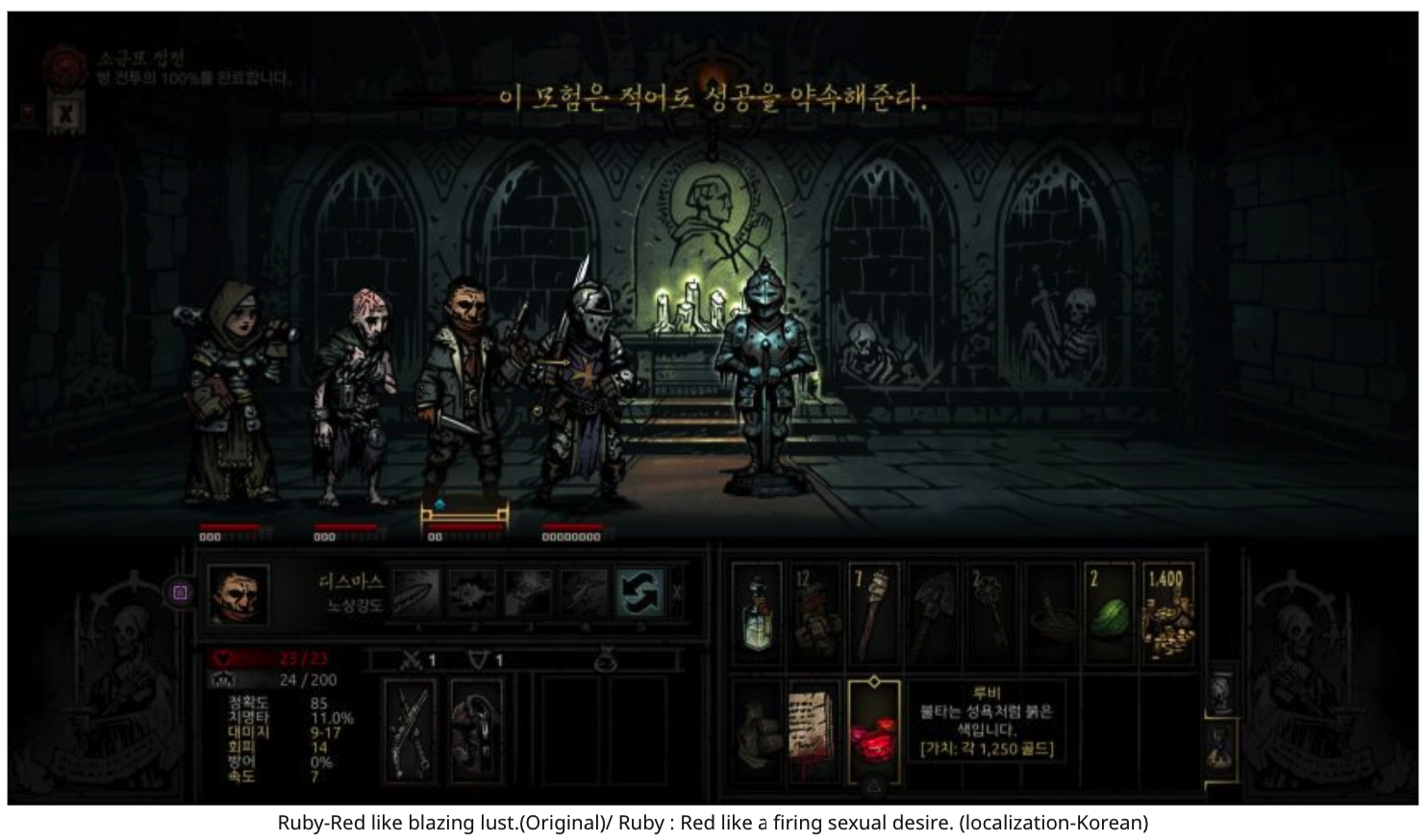Trending
Opinion: How will Project 2025 impact game developers?
The Heritage Foundation's manifesto for the possible next administration could do great harm to many, including large portions of the game development community.
Korean is one of the biggest gaming markets in Asia, 4th largest games market worldwide. Compared with China, censorship is not exist in the Korean gaming market. I will share more hidden rules about Korean game localization and you shouldn't miss it!

This post was originally published in the LocalizeDirect blog

The new era, with a busy mobile market, creates a new pathway for many game types. The best part: the door to the Korean market
The new era, with a busy mobile market, creates a new pathway for many game types. The best part: the door to the Korean market is opening. Korea has historically been perceived as a mobile gaming heaven. In order to gain access and take a slice of the Korean gamer pie, game localization is necessary. The Korean game market is growing both in downloads and revenue. A video game translation into Korean is a good investment if you want to reach the Asian continent.
KEY TAKEAWAYS:
South Korea is the 4th largest games market worldwide after the US, China, and Japan. Korean is in the top three Asian languages for game localization and in the top 10 globally (LocalizeDirect research)
Korea is one of the most unrestricted game markets in Asia with almost zero censorship.
Localization QA is mandatory for a game translated into Korean as local gamers are likely to complain online about poor localization. While game translation into Korean starts at €0.12 ($0.14)/word, LQA testing will cost €30/hour.

South Korean Game Localization Factsheet
Of nearly 29M gamers, almost half spend money on games. The average amount a Korean gamer spends on games is close to $200 per year; this makes Korean gamers some of the highest spenders in the world.
Mobile games were the main driver of total app revenue, generating 85%. It’s the highest share compared to other Asian markets like China or Japan.
Even though the Asian market is huge, the game market has been difficult to monetize. In terms of geography, South Korea is rather small compared to a giant like China, but revenues are very impressive.
Revenues generated in 2019 are estimated to be $6.2B. Let’s compare this with large game markets like Germany, the United Kingdom, Australia, and France – all with revenues below $4B. This makes South Korea the 4th largest game market in the world.

ASIA-Pacific Game Revenues
Korean consumers are fast adopters. 94% of Koreans have a smartphone, thus making it the #1 country globally in terms of both smartphone penetration and internet usage. 56% of smartphone users use their mobile device more than a computer or tablet. South Korea is on its path to 5G, and consumers have begun the transition to 5G devices and services. In the next few years, 5G is very likely to overtake 4G.
Koreans prefer mobile gaming to console (19%) or PC games (37%).
RPG is a trend. Popular game genres for men are MMORPG or RPG adventure games. Women play RPG too, but also puzzle, web board games and casual games. 3 of the 10 top-grossing iOS games are published by foreign companies, and all are strategy games.
Many Koreans commute using public transportation. You can see all ages, from youngsters to seniors, playing different games when traveling. Korean gamers prefer free to play games, but freemium is the business model to choose for a developer aiming at the Korean game market.

Korean traditions are the opposite of Western ones. In the USA, and parts of Europe, individual performance is rewarded. That is not the case in Korea. In Korea and many Asian countries, the social aspect is very important and working as a group is vital.
PC bangs (gaming centers where gamers can meet and play multiplayer computer games for an hourly fee) are open 24⁄7 and are super popular in Korea, partly due to its social nature.
Games that allow the players to cooperate, and the gamer to play with a team, or to invite others to join the game, are the winners. In-app purchases that allow gamers to communicate with others are the games with a high ROI.
Why? Because they let gamers continue to play the game, even though they may have depleted their lives. The other members of the team are waiting to progress and to let them down is not a fun thing to do, the purchase is a given.
Korean is one of the top three Asian game translation languages. Professional Korean gamers tend to become very loyal to games with quality Korean localization. So it is very important to invest time and budget for this in the localization process.
#1 Adjust game’s UI
The Korean alphabet is known as Hangul in South Korea. It consists of 24 consonants and vowel letters grouped in blocks. Every block consists of 2 to 6 letters, including at least 1 consonant and 1 vowel. The text is written from left to right, or from top to down(although the vertical writing is considered as outdated, and nowadays Koreans prefer horizontal writing).
However, if your game refers to the old manuscripts, consider writing them from top to down - and consider text placement too!
#2 Mind the word order
The order of words in Korean is completely different from English, so combining multiple strings instead of putting in variables does not work most of the time. For instance, the phrase “Select 3 out of 10 weapons”, in Korean, will literally sound as “Out of 10 weapons, select 3” because the larger number should go first. Taking into account their moderate knowledge of English, Korean gamers may find it hard to grasp the meaning of incorrectly translated English text.
#3 Culturalize images
Images in the game also need to be localized. Korean users like playing games in their own language, so culturalization/localization of in-game design elements is very important to them. Especially, if they can spark controversy (we’ll touch upon that later).
#4 Do a linguistic test before publishing
Many game publishers seem to skip the linguistic testing process due to schedule or budget, even though having a good linguistic testing process can improve their games a great deal.
An example: In 2018, Darkest Dungeon caused anger and resentment among gamers in South Korea due to its multiple mistranslations (despite it being reviewed as 9⁄10 on Steam). For instance, the original phrase “Claim your birthright” was translated as “Find your life” (네 삶ì„ ì°¾ê³ ). As well as many other instances.

Mistranslation in the Korean version of Darkest Dungeon
…And this is the reaction of Korean gamers:

Feedback on the Korean game localization of Darkest Dungeon
This made the gaming company apologize publicly.
#5 Avoid excessive cruelty
Click here if you want to know more about Korean game localization essentials and how much it will cost to localize your game into Korean.
Read more about:
BlogsYou May Also Like